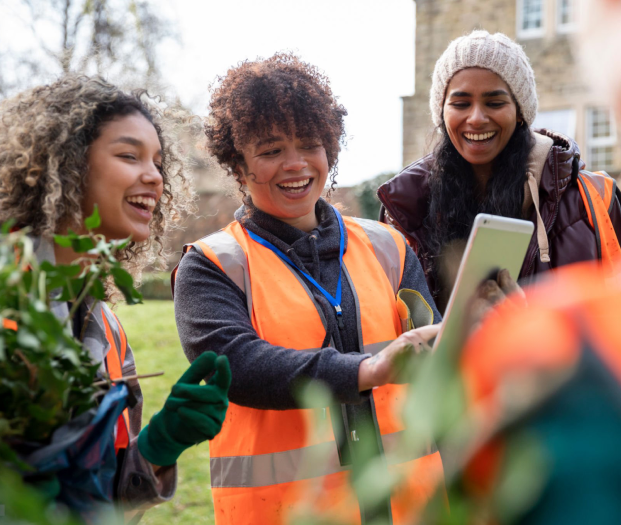Table of contents
Recommended for you

The art of bringing your people on the journey
Once upon a time, in a land not so far away, engagement was heralded as the answer to every organisation’s challenge. Highly engaged employees equalled better business performance and companies all over the globe invested to heighten the engagement of their workforces.
How quickly times change! While “engagement”- and how people “feel” about working for an organisation - is still a consideration and aims at harnessing the employees’ positive motivations, the theme has expanded to include what they “think” about how the business operates.
Employees often have insights into business operations that leaders never get to hear. Involving staff and canvassing their thoughts on strategy, leadership, project management, change management, internal communication, customer focus and business processes, to name but a few, not only delve deeper into the employee-employer relationship, but also provides insights the business may never acquire without asking its core asset - its people.
The Uber has arrived to challenge and disrupt pure engagement practices, and that requires continuous involvement of your people. To provide the best solutions to business challenges you’ll need to access your employees’ thoughts and their ideas for overcoming them. Continuous involvement of your greatest assets thereby leads to continuous improvement, and by definition, high performing businesses.
Now that’s a pretty compelling proposition for attraction and retention of talent, and when it flows on to your customers through front-line staff, it becomes a great customer experience and a differentiator from your competitors.
The importance of empowering workplace cultures
Leaders who are serious about creating genuinely empowering workplace cultures are quite comfortable with handing out responsibility to others. They encourage individuals and teams in their organisation to step up, make their own decisions and pave their own path to success. They enable, inspire and encourage people to take steps to improve their work experiences.
Empowering leaders listen, offer support, welcome and value all ideas. They are focused on removing barriers that limit individuals and teams’ ability to act in empowered ways, and they make sure essential tools and resources are available so that people can successfully manage and lead their own projects, work towards their goals and drive their own careers - and this is exactly how you start building better workplace cultures and agile businesses.
Creating an environment where people want to show up
We hear about employee experience and where the future of work is shifting. Rather than simply concentrating on engagement and workplace cultures, organisations are now focusing on employee experience and the reasons why employees want to work versus need to work.
Author and futurist Jacob Morgan says: “A lot of organisations have historically focused only on one aspect of organisational change and that is culture”. What a workplace culture tells us is usually how employees feel when they are inside of an organisation - the vibe that they get, the organisational structure, leadership style, compensation and benefits, etc. While culture is still an important part of the employee experience, it is only one aspect.
Rather, employee experience, is a combination of three distinct elements that exist within any organisation regardless of its industry, size, or location. It is in a constant flux and therefore needs constant care and attention. The first two parts of employee experience cover the technological and physical environment.
The technological environment relates to relevant tools employees need to get their jobs done effectively -user interfaces, mobile devices, laptops and desktops - whereas physical environment refers to anything that can be seen, heard, touched, and tasted - such as work desks, comfy chairs, art on the walls, and snacks, meals or drinks that are provided by the organisation.
Offering a comfortable space to work in and modern tools to work with is not only crucial given employees spend most of their time inside the organisation, it is also important because these elements are likely to either have a positive or negative effect on employees and the way they perceive their organisation.
Productive workforce
For decades organisations have been investing in employee engagement with very little results. Unfortunately, engagement has been very focused on trying to force employees to work in outdated workplace practices while giving them occasional perks to distract them from their unfortunate situations. Employee experience, on the other hand, is about changing and challenging these stagnant workplace practices.
Designing better employee experiences might sound straightforward, but it comes with a number of challenges. Workplaces have become more complex than what they used to be which makes employee engagement and productivity much harder to improve.
Global management guru, Josh Bersin, lists several factors that make employee experience challenging.
Given that the focus and priorities for HR departments continues to move with unprecedented speed, where should budget, resource and effort be directed in our emerging world of work? The short answer is to your people.
People are the cornerstone upon which any business is founded, and if you don’t know what they are thinking, the unfortunate reality is that trouble is only a moment away.
Using surveys and questionnaires is crucial when gauging your employees’ views and opinions.
Gone are the days where employees didn’t have a say. With the advent of crowd sourcing of information in our daily lives, it’s only natural to expect to see this extending into our work environment too.
The benefits of crowd sourcing ideas from within the organisation are undeniable and long recognised. The most advanced systems, like AskYourTeam, don’t only allow leaders to tap into the valuable intel, they are also paramount for fostering empowerment across teams and amongst individuals. Continuous involvement of people allow threats and opportunities to be identified clearly which in turn helps businesses decide where to focus on and when.
The bottom-line impact of mining the gold from within, combined with the empowerment of owning the solution engenders high performance thinking and action, and creates a culture of problem solving and action orientation across the whole organisation. When individuals can see that their opinions are not only listened to but also acted on, they become more invested in the outcomes which in turn improves their productivity levels.
Beyond employee engagement
Bersin explains that the HR technology market moves in five to seven year cycles of rolling-out, implementing, and replacing tech. We are now in a transitional phase between two cycles.
One of the biggest employee engagement trends we are seeing is the arrival of a new breed of pulse tools, feedback apps, and anonymous social networking tools. These performance evaluation methods for having regular check-ins with employees to understand where they are being challenged will eventually replace annual performance reviews.
It seems we have moved from the catch all of employee engagement being the answer to all organisational challenges. There is healthy acknowledgement that the trends happening right now are around the continuous involvement of your people and their insights into how the business is performing. Your employees want to tell you where the company could be doing better, and they want to be part of delivering on the solution.
The feeling of purpose your people experience from being continuously involved and seeing the results of their input becomes a strong talent attraction and retention tool. It is also a means to lift business productivity as those responsible for the outcome were those who were part of designing and implementing the plan. This creates action and high-performing teams and businesses.
As global engagement scores continue to decline, it’s becoming more and more evident that the top- down philosophy of engagement isn’t resonating and delivering the holy grail it used to. We have new generations in our workforce and so the concepts we deliver must flex to meet the changing demographics and drivers.
Businesses themselves are changing, disruptors appear, and we aren’t always certain what is coming next. Within that framework, perhaps the next shift is to move from asking employees: “This is what we did. How happy are you?” to “How can we enable you to do your best work and connect with your purpose? “
This has to be the bottom line question for a productivity focused workforce whose employee experience is that of a raving fan.










